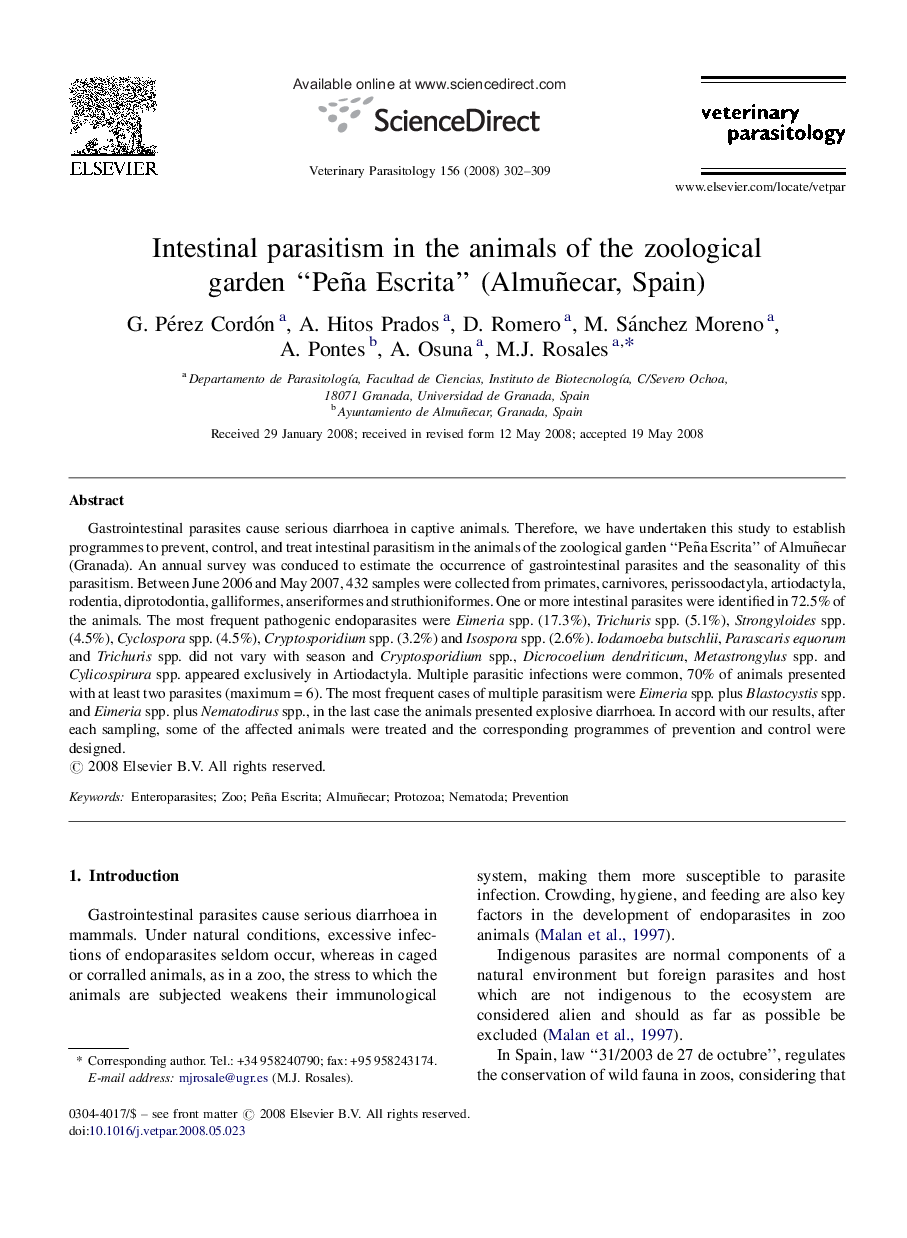| Article ID | Journal | Published Year | Pages | File Type |
|---|---|---|---|---|
| 2471579 | Veterinary Parasitology | 2008 | 8 Pages |
Gastrointestinal parasites cause serious diarrhoea in captive animals. Therefore, we have undertaken this study to establish programmes to prevent, control, and treat intestinal parasitism in the animals of the zoological garden “Peña Escrita” of Almuñecar (Granada). An annual survey was conduced to estimate the occurrence of gastrointestinal parasites and the seasonality of this parasitism. Between June 2006 and May 2007, 432 samples were collected from primates, carnivores, perissoodactyla, artiodactyla, rodentia, diprotodontia, galliformes, anseriformes and struthioniformes. One or more intestinal parasites were identified in 72.5% of the animals. The most frequent pathogenic endoparasites were Eimeria spp. (17.3%), Trichuris spp. (5.1%), Strongyloides spp. (4.5%), Cyclospora spp. (4.5%), Cryptosporidium spp. (3.2%) and Isospora spp. (2.6%). Iodamoeba butschlii, Parascaris equorum and Trichuris spp. did not vary with season and Cryptosporidium spp., Dicrocoelium dendriticum, Metastrongylus spp. and Cylicospirura spp. appeared exclusively in Artiodactyla. Multiple parasitic infections were common, 70% of animals presented with at least two parasites (maximum = 6). The most frequent cases of multiple parasitism were Eimeria spp. plus Blastocystis spp. and Eimeria spp. plus Nematodirus spp., in the last case the animals presented explosive diarrhoea. In accord with our results, after each sampling, some of the affected animals were treated and the corresponding programmes of prevention and control were designed.
